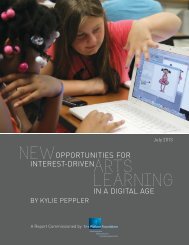Checklist for Effective Disaster Response: Insights for Wise ...
Checklist for Effective Disaster Response: Insights for Wise ...
Checklist for Effective Disaster Response: Insights for Wise ...
Create successful ePaper yourself
Turn your PDF publications into a flip-book with our unique Google optimized e-Paper software.
2.1 Combine and integrate the short term acute disaster and longterm chronic disaster approaches to produce measurable savings ofenergy and time and increase impact so that what you do in thepresent sustains the future.2.2 Contact and get directly involved with United Nationsagencies 13 , bilateral donors 14 , and humanitarian NGOs 15 todetermine opportunities <strong>for</strong> collaboration. Contact and work closelywith UN Office <strong>for</strong> the Coordination of Humanitarian Affairs or othercoordinating body <strong>for</strong> the particular region or emergency if there isone. Get directly involved in the coordination groups, institutionalarrangements, communications networks that will be established in-country to increase prospects <strong>for</strong> effectivecoordination, collaboration or partnering.2.3 Map other international agencies and NGOs in the impact zone. Consider which can best tap local resourcesand offer credibility. Involve groups and individuals in the impact zone in ways that respect their resourcefulnessand build on their skills and capacities. 162.4 Explore the pros and cons of innovative giving options like micro-lending to disaster survivors.2.5 Determine whether the organization/s to which you are donating will allow you to specify and earmark yourdonations <strong>for</strong> the phase/s of the disaster response you wish to support.2.6 Look <strong>for</strong> a match with businesses worldwide that support humanitarian ef<strong>for</strong>ts with gifts in kind and othersupport. 172.7 Never assume that a relief NGO or a government agency will ship items you provide even part of the distanceto recipients. In fact, if your organization sends goods to an agency in the country of the crisis without making theproper arrangements, you may be charged commercial rates <strong>for</strong> shipping or warehousing them. 182.8 Identify the core competencies of each partner and ways they can be combined to meet the requirements ofthe proposed project. Consider ways to complement existing ef<strong>for</strong>ts in areas such as sanitation, immunization andfinancial services rather than duplicate them in any one area or to replicate ef<strong>for</strong>ts that have been successful inadjacent areas.2.9 Manage meetings and discussions effectively. Don't push <strong>for</strong> premature consensus; instead let optionsdevelop and stay open to midcourse corrections as the situation changes. Use low cost voice-over-Internet phoneservice (VoIP) and video conferencing to bring together potential partners along the supply chain.2.10 Partnerships require time, which is at a premium during emergencies. Preferably create partnerships be<strong>for</strong>ethere is a need. Identify stakeholders along the supply chain and ensure they are involved in initial planning and ina position to offer feedback and suggestions <strong>for</strong> corrections throughout the project.2.11 Confirm all partnerships with appropriate memoranda of understanding (MOUs) or contracts.2.12 Choose clear, easy to use planning tools 19 when bringing partners together. Use more complex tools tointegrate details once everyone understands their primary responsibilities.2.13 Define roles and lines of accountability. 20 Outline responsibilities in terms of what each partner expects ofthe other. Determine the resources each is committing, such as staff, space, equipment, goods, expertise orfinancial services. Decide who will pay <strong>for</strong> what, taking into account differences in banking procedures, accountingsystems, exchange rates and fiscal calendars. Expect concerns, constraints and complaints and address them inways that build capacity and cooperation. Consider adopting a mediation/arbitration agreement.2.14 Ensure that support <strong>for</strong> the project at headquarters is aligned with expectations in the field.2.15 Assess risk and plan <strong>for</strong> contingencies, that is, situations that cannot be predicted but which require moreflexibility, resources or time than those budgeted. 21 Discuss with partners, systems that ensure that supplies reachthe most vulnerable despite traditional power structures that may exclude them. Discuss ways to minimize risk incase a partnership does not work out.








